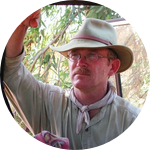About This Project
Mammoth Site scientists, partners, and volunteers are on a mission to understand climate change in the Black Hills during the latest Ice Age. To accomplish this, we are working together to rappel into and excavate a remote cave in the Black Hills of SD. Rapid deposition of sediments in this cave covered the remains of many different animals. These exciting new discoveries have provided us with snapshots of what the climate and environment was like thousands of years ago.
Ask the Scientists
Join The DiscussionWhat is the context of this research?
There are numerous caves in the Black Hills, including the longest cave system in North America, Jewel Cave National Monument. Also, near The Mammoth Site is Wind Cave National Park which brings many visitors to the region. These are just among the numerous caves found throughout the Black Hills. We are planning on excavating one such cave in the southern Black Hills to help us to better understand what life was like in this region during the Ice Age. This cave is remote but provides for a perfect environment to explore. Our work is driving new questions as to why certain animals live here today that did not live here in the past and why those that lived here in the past are extinct or live in different parts of North America today? We hope to better understand these changes.
What is the significance of this project?
Caves and their deposits can be a window into the past, and this locality is no different. Due to the remoteness of this cave, most of the sediments have been left untouched. The layers of sediments show us that there was rapid deposition through time which is the perfect backdrop for good fossil preservation. We are finding that there is a lot more to understand what went on during this time, not only climatically but with the fauna present. For example, why do we find white-tailed prairie dogs in the fossil deposits, when only black-tailed prairie dogs live in the region today? We hope that this cave deposit will help to fill in these gaps in understanding and to give us a better picture of all the changes during the latest Ice Age.
What are the goals of the project?
This fall we will excavate into new layers of sediment, thereby going further back in time to uncover new fossils and hopefully find new species for the cave. We will take sediment bags to The Mammoth Site to be screenwashed and sorted for minute fossils. Ecologically important species will be radiometrically dated to know where we are in time, as well as to understand the geology and how climate changed in the region during the Ice Age. Another critical goal is to share our research with the public by: including volunteers, submitting publications, developing free kits for teachers and lesson plans using 3D models, posting on social media, and eventually providing exhibits on Ice Age paleontology.
Budget
Continued excavation of this remote cave is vital for understanding of the Ice Age in the Black Hills. In order to safely lower and raise people, supplies, and sediments through the over 30-ft vertical entrance, we must purchase a winch. To operate the winch and light the cave, we have a gas generator. We plan to radiometrically date climatically important specimens to understand the rapid deposition of the sediments within the cave. Proper storage and organization of fossils is vital to the preservation of collections because of this we plan to purchase an archival storage cabinet. Sharing what we discover at this cave through publications, education, public outreach, and exhibitsis essential to The Mammoth Site’s mission. CT scans will provide 3D images for research and allow for 3D printing of replicas to be used for exhibits, lesson plans and educational kits.
Endorsed by
 Project Timeline
Project Timeline
The Mammoth Site's field season for excavating this remote cave will begin in early September and go for two weeks. We would like to keep all backers and the public updated with daily posts about the work we are doing during our field session. Sediments will be screenwashed and picked for micro fossils during and after. Once important specimens are identified they will be sent for radiometric dating and CT scanning after which 3D prints and ed. materials will be developed.
Mar 08, 2019
Project Launched
Sep 03, 2019
Purchase Equipment for Field Season
Sep 05, 2019
Start of Excavation
Sep 05, 2019
Daily posts about fieldwork progress
Sep 21, 2019
End of Excavation
Meet the Team
Sharon E. Holte
Dr. Sharon Holte is the Director of Education at The Mammoth Site of Hot Springs, SD--an active paleontological site, accredited museum, and non-profit 501(c)(3). She received her PhD in Biology from the University of Florida where she specialized in vertebrate paleontology. She earned a MS in Geosciences from East Tennessee State University and a BS in Geology from South Dakota School of Mines and Technology. Dr. Holte's role as Director of Education has her providing STEAM learning opportunities to the public through educational classes, community outreach, and museum exhibits. She aims to promote public understanding of science and to bridge formal and informal STEAM education.
Jim I. Mead
Dr. Jim I. Mead is the Director of Research at The Mammoth Site. He earned his PhD (1983) and MS (1979) in Geosciences at the University of Arizona where he specialized in Ice Age paleontology. His over 160 published articles focus on lizards, snakes, mammals, dried-preserved ancient dung, and environmental reconstructions, with many of these fossils coming from cave deposits. Dr. Mead’s role is to conduct research on Ice Age deposits from in and around the Black Hills along with localities as far south as northern Mexico and then organize the results from these projects to be utilized in education and outreach at The Mammoth Site.
Project Backers
- 24Backers
- 100%Funded
- $1,830Total Donations
- $76.25Average Donation


